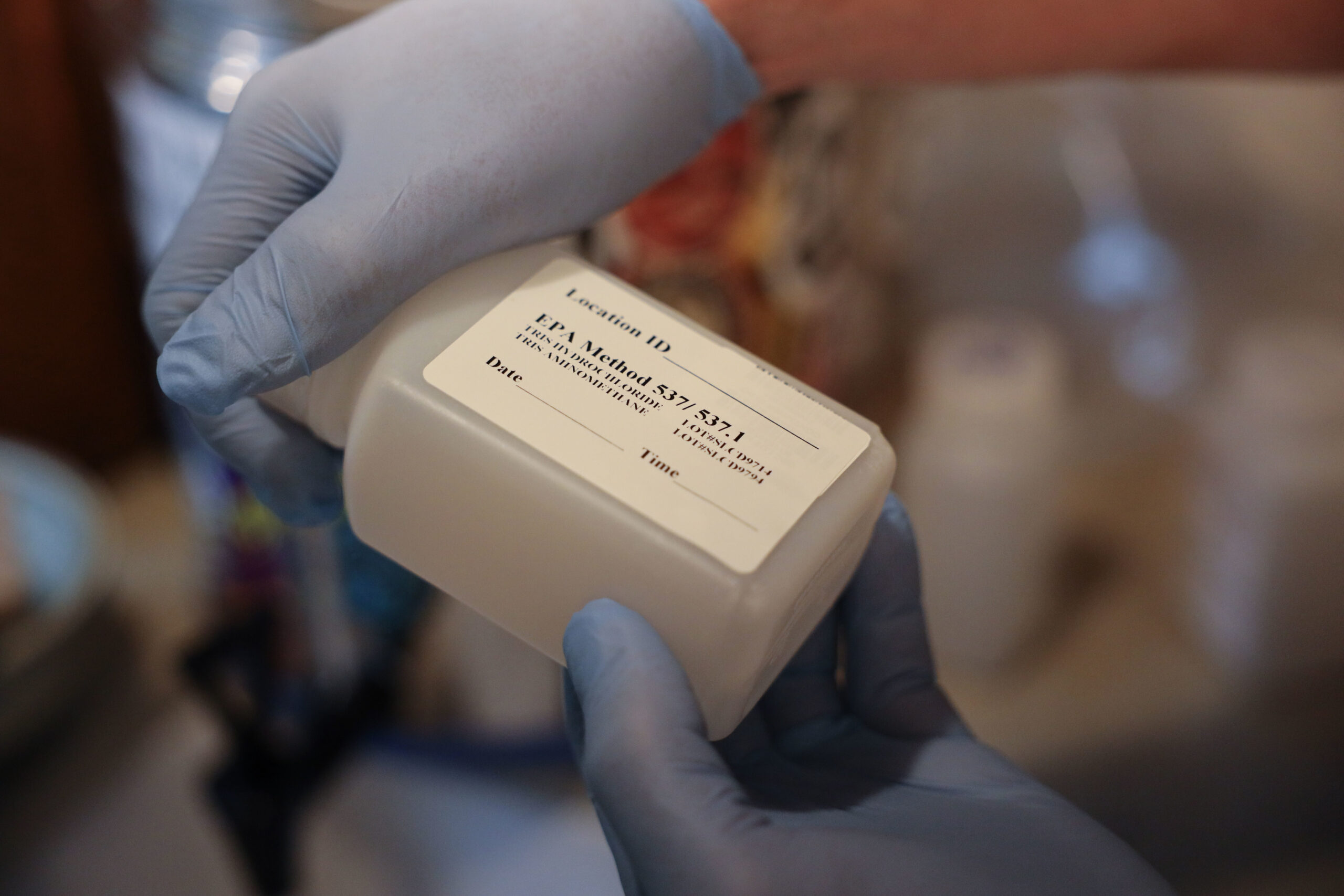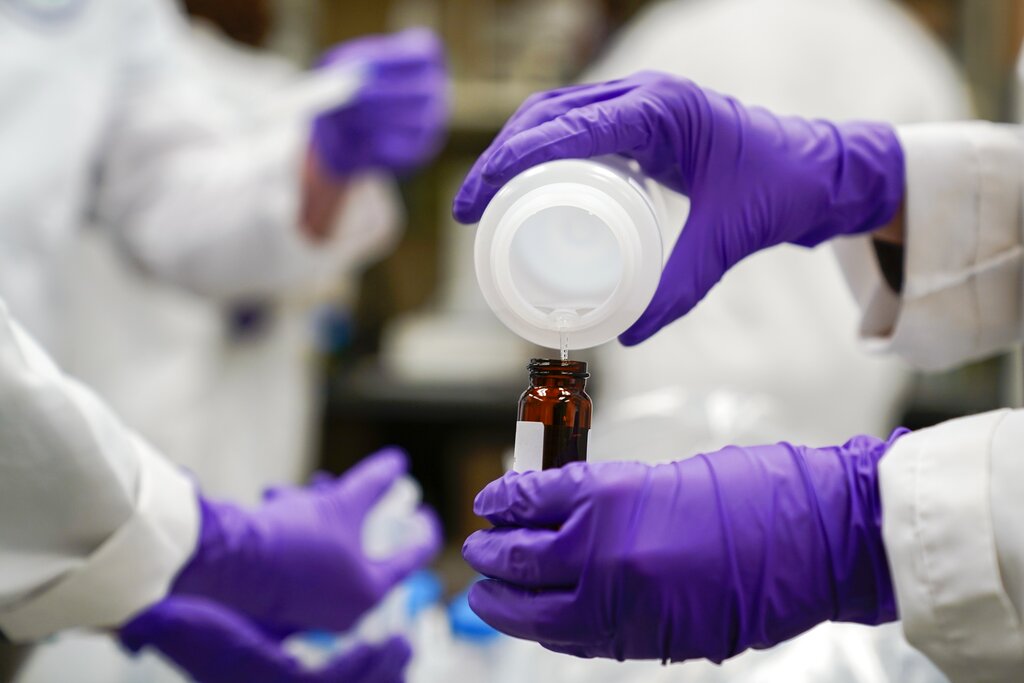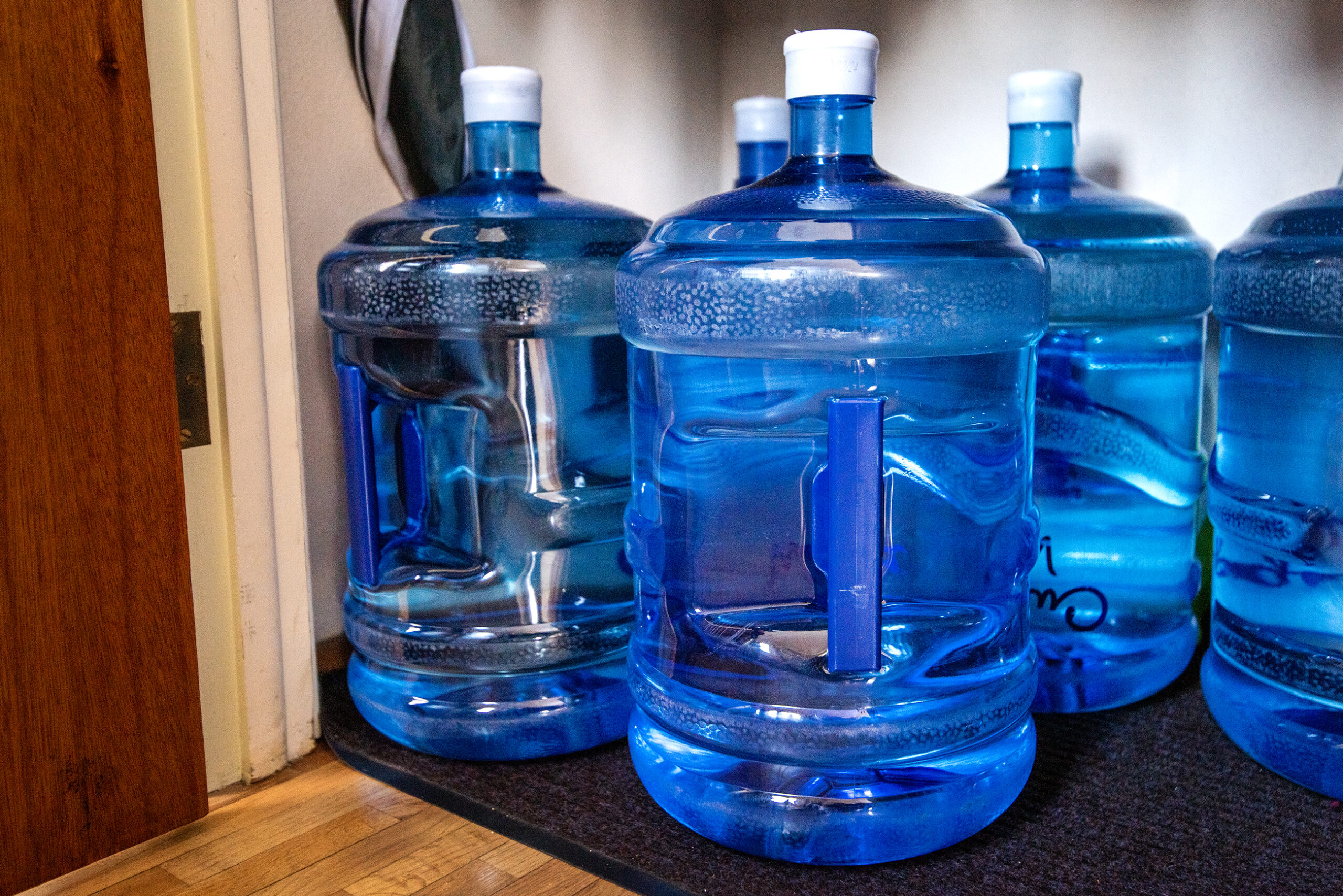The Environmental Protection Agency on Tuesday released proposed limits for harmful “forever chemicals” in drinking water to the lowest levels they can be measured, saying it will save thousands of lives and drastically reduce PFAS-related illnesses.
“EPA’s proposal to establish a national standard for PFAS in drinking water is informed by the best available science, and would help provide states with the guidance they need to make decisions that best protect their communities,” EPA Administrator Michael Regan said in a news release. “This action has the potential to prevent tens of thousands of PFAS-related illnesses and marks a major step toward safeguarding all our communities from these dangerous contaminants.”
The proposed limits are less stringent than new health advisory levels for four PFAS, or per- and polyfluoroalkyl substances, released last June by the EPA.
News with a little more humanity
WPR’s “Wisconsin Today” newsletter keeps you connected to the state you love without feeling overwhelmed. No paywall. No agenda. No corporate filter.
The EPA is proposing individual limits for the two most widely studied PFAS chemicals — PFOA and PFOS — at 4 parts per trillion. That’s more than 17 times lower than Wisconsin’s drinking water standard for PFAS — 70 parts per trillion — that took effect last summer. The EPA wants to regulate the combination of four other PFAS, including PFNA, PFHxS, PFBS and GenX chemicals.
Steve Elmore, the program director for drinking water and groundwater at the Wisconsin Department of Natural Resources, said the agency along with the Department of Health Services will review the proposed limits and monitor the EPA’s rulemaking until final drinking water standards are released.
“We will then proceed with state rulemaking to incorporate these drinking water maximum contaminant levels into state law, and then continue on with implementing them with the public water systems that they apply to in the state,” Elmore said.
In the meantime, Wisconsin’s drinking water standard for PFAS hasn’t changed, and the agency recommends public water supplies take voluntary steps to limit the chemicals in drinking water at or above state health advisory levels. Elmore said they’ll work with state health officials on any updates to health guidance as they work to provide the best advice to people with PFAS in their water.
Water systems, public health professionals, the public and others will be able to comment on the EPA’s proposal. Federal environmental regulators hope to issue a final rule by the end of this year or early next.
PFAS are a class of thousands of synthetic chemicals widely used by industry since the 1940s. They’ve been used in everyday products like nonstick cookware, stain-resistant clothing, food wrappers and firefighting foam. The chemicals don’t break down easily in the environment. Research shows high exposure to PFAS has been linked to kidney and testicular cancers, fertility issues, thyroid disease and reduced response to vaccines over time.
The limits are the first proposed standards for the chemicals in drinking water since industry first alerted the EPA to the health hazards of PFAS nearly 25 years ago. Documents show companies like 3M knew PFAS could be toxic and posed health risks as far back as the 1960s.
The Wisconsin Chapter of the Sierra Club and Clean Wisconsin called the EPA’s proposal a significant step in addressing PFAS contamination.
“These proposed limits, if they are finalized, will mean safer drinking water,” Scott Laeser, water program director for Clean Wisconsin, told WPR. “I think anyone who has been paying attention to the science that’s been coming out lately about the health risks that PFAS poses expected standards along these lines.”
In Wisconsin, PFAS have been detected in more than 50 communities from small towns like Peshtigo and Campbell to larger cities like Eau Claire, Wausau and Madison. The DNR is actively investigating around 100 sites for PFAS pollution, according to its website tracking environmental cleanups.
Industry groups like Wisconsin Manufacturers and Commerce, or WMC, supported the state’s drinking water standard for PFAS based on the EPA’s previous health advisory level of 70 parts per trillion released in 2016. Even so, they’ve questioned the science behind more restrictive limits on the chemicals. State industry groups have also argued inconsistent state, federal and international standards demonstrate a lack of consensus on appropriate limits for the chemicals. Craig Summerfield, WMC’s environmental and energy policy director, said they’re carefully reviewing the proposed standards.
“Unfortunately, the proposal appears to go far beyond any reasonable criteria for regulating PFAS,” Summerfield said in a statement. “For example, they are completely out of line with the draft guidelines of 100 ppt for PFOA and PFOS from the World Health Organization. WMC continues to support standards for PFAS that are reasonable, cost-effective and based on the latest peer-reviewed science.”
Both industry and water groups have highlighted concerns over the cost of complying with more stringent standards. The American Water Works Association estimates treatment of PFAS in drinking water could cost up to $38 billion. In small communities, advocates for rural Wisconsin water systems have said the cost to replace a contaminated well may run up to $2 million.
Chris Groh, executive director of the Wisconsin Rural Water Association, said his members will need financial assistance to comply with the EPA’s proposal if passed.
“This limit is going to cost them money from start to finish in the process: engineering, testing, monitoring, treatment, treatment disposal,” Groh said.
Toni Herkert, government affairs director with the League of Wisconsin Municipalities, said their members are working to understand the effects of PFAS regulation on their communities.
Cities like Wausau and Eau Claire are planning to spend tens of millions of dollars on systems to treat the chemicals. Wausau Mayor Katie Rosenberg said the city’s new treatment plant has a temporary solution to treat for PFAS after the chemicals were discovered at elevated levels in all six city wells last year. She said the city plans to install a permanent granular activated carbon filtration system by the end of next year, which is expected to cost $17 million or more. Rosenberg said the new system will be able to meet the EPA’s proposed standards.

Even so, the city’s roughly 14,000 water ratepayers are expected to pay an extra $50 on their quarterly bills to pay for it.
“It’s just another thing that we’re asking our community to help support, it’s not lost on us that it’s challenging for some families,” Rosenberg said.
Meanwhile, the EPA’s proposed limits wouldn’t apply to private wells that draw from groundwater — a source of drinking water for one third of state residents. State protections are currently lacking. The Wisconsin Natural Resources Board failed to pass limits on the chemicals in groundwater when it approved drinking water standards for PFAS at levels weaker than those recommended by state health officials.
The town of Peshtigo has been fighting for more than five years to address PFAS contamination of private wells stemming from the use of firefighting foam that contained the chemicals at Tyco Fire Products’ fire training facility in Marinette.

Photo courtesy of Johnson Controls International
Cindy Boyle, town of Peshtigo chair, said the EPA’s announcement nearly brought tears to her eyes.
“When you have a federal level set that is reflective of this kind of number, it allows the argument for groundwater safety to be that much stronger,” Boyle said. “So, we’re very encouraged.”
In December, the Natural Resources Board voted unanimously to allow Wisconsin environmental regulators to once again begin crafting health-based standards for PFAS in groundwater. The DNR has said it would take proposed limits from the EPA into account when developing standards.
President Joe Biden’s administration is devoting $10 billion from the bipartisan infrastructure law to address emerging contaminants like PFAS. Gov. Tony Evers also recently proposed more than $100 million in the next two-year state budget to address PFAS.
Evers’ plan would support increased testing and monitoring, funding to provide temporary drinking water to affected households and 11 new positions at the DNR to tackle the chemicals. Republican lawmakers like Sen. Rob Cowles of Green Bay and Sen. Mary Felzkowski from Irma have indicated they may be willing to spend money on PFAS under the budget to address the chemicals. Staff for Senate Majority Leader Devin LeMahieu and Assembly Speaker Robin Vos said the GOP legislative leaders were not immediately available for comment Tuesday on the EPA’s proposal.
Wisconsin Public Radio, © Copyright 2025, Board of Regents of the University of Wisconsin System and Wisconsin Educational Communications Board.







